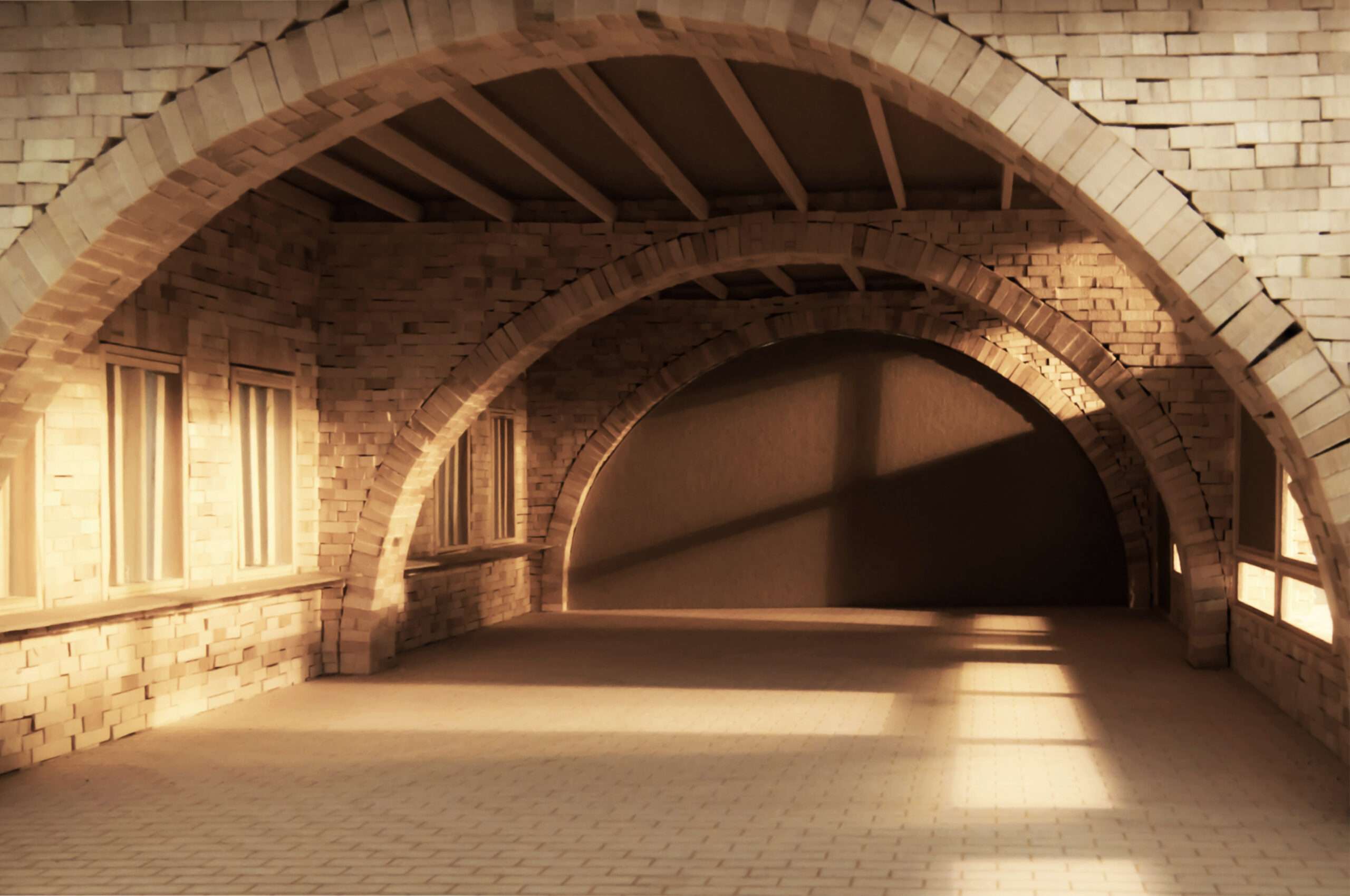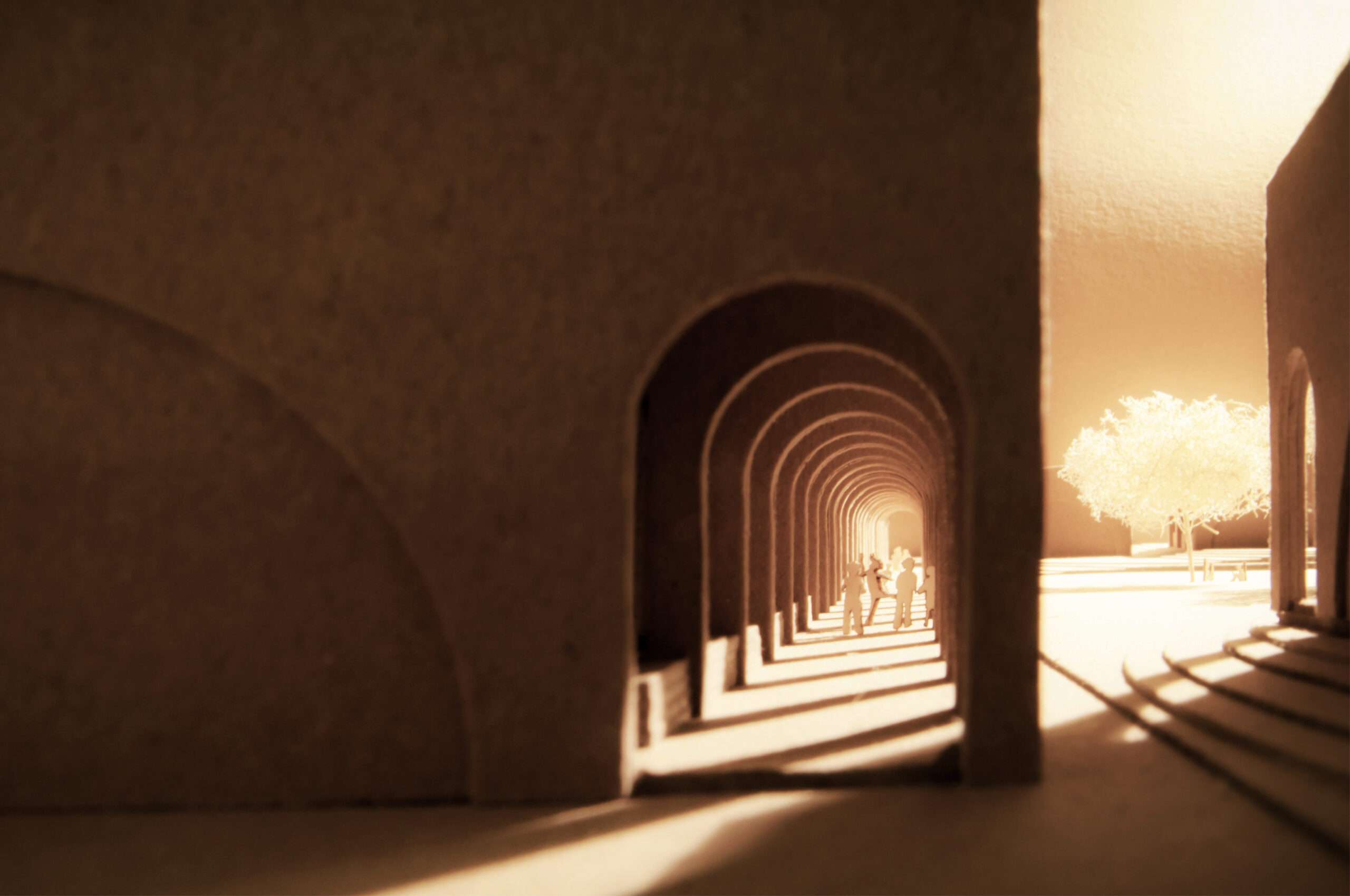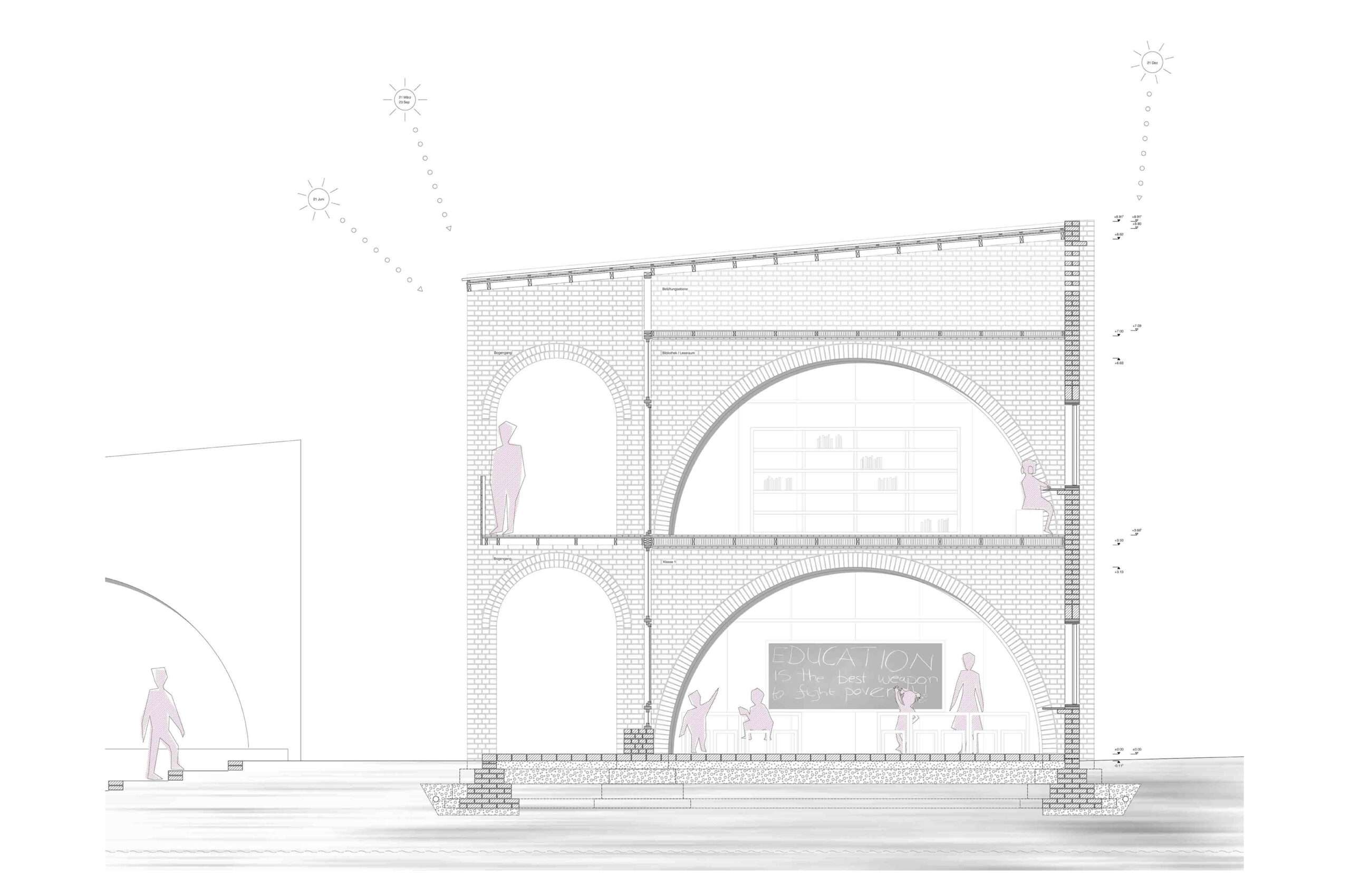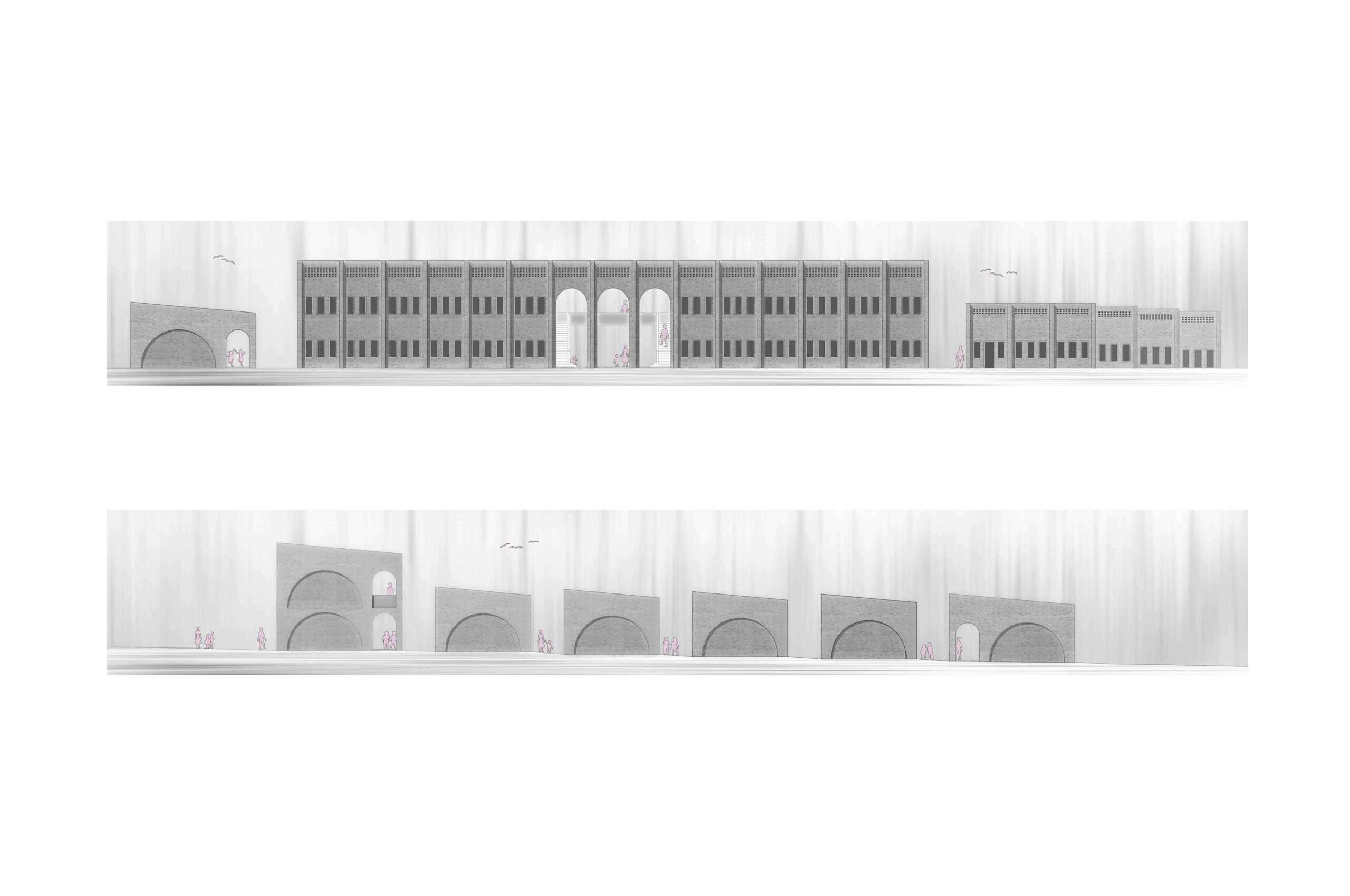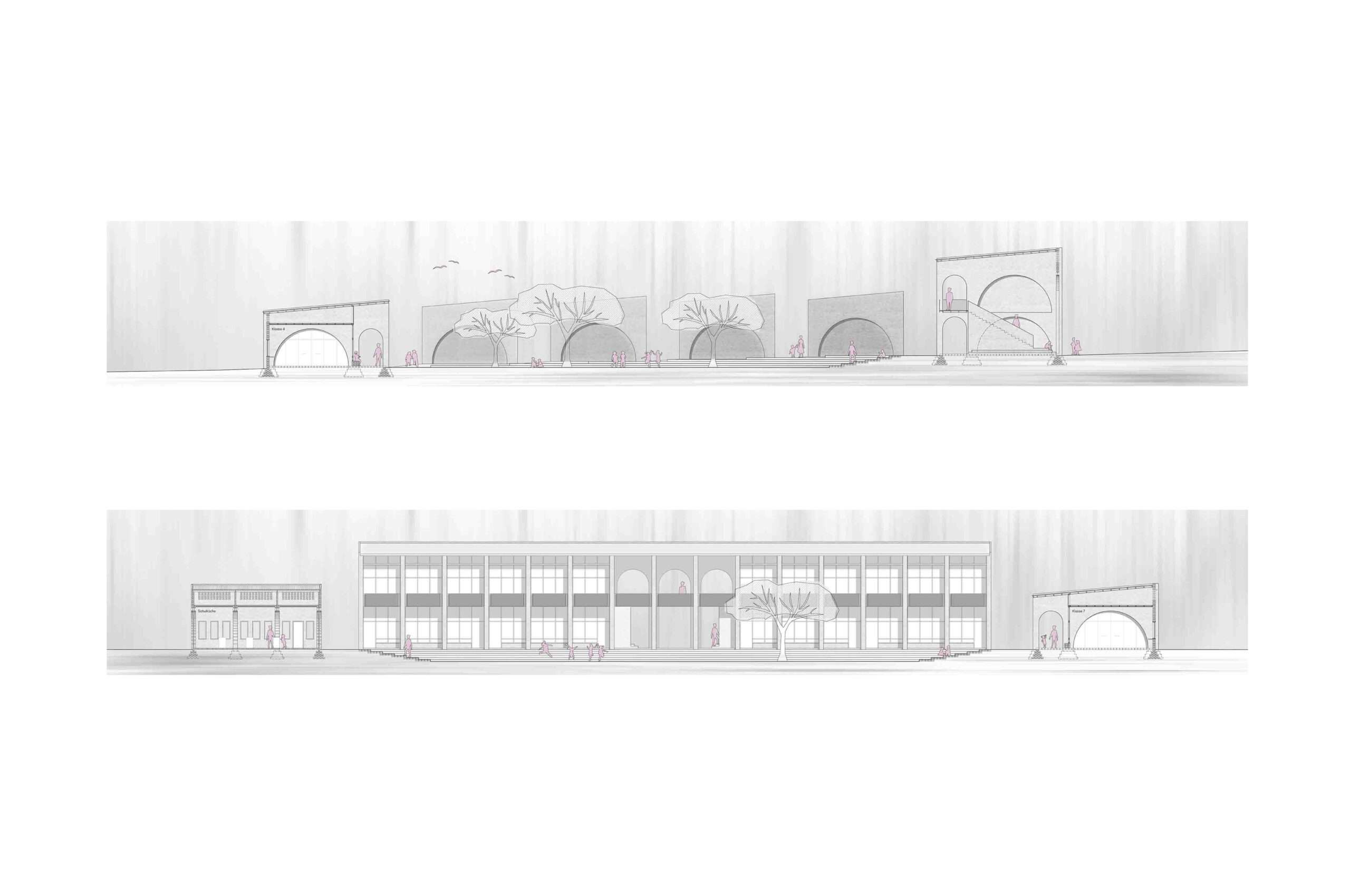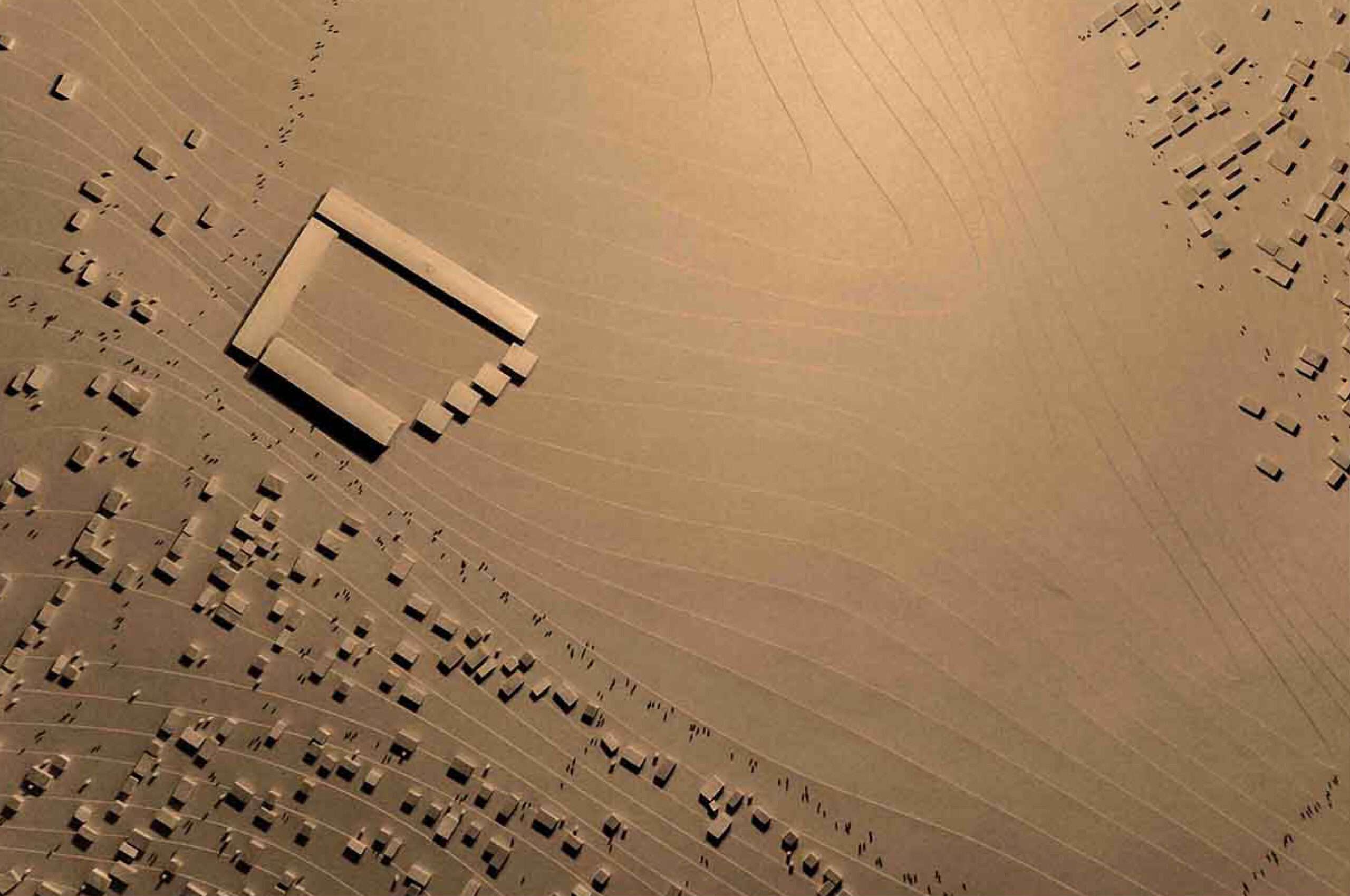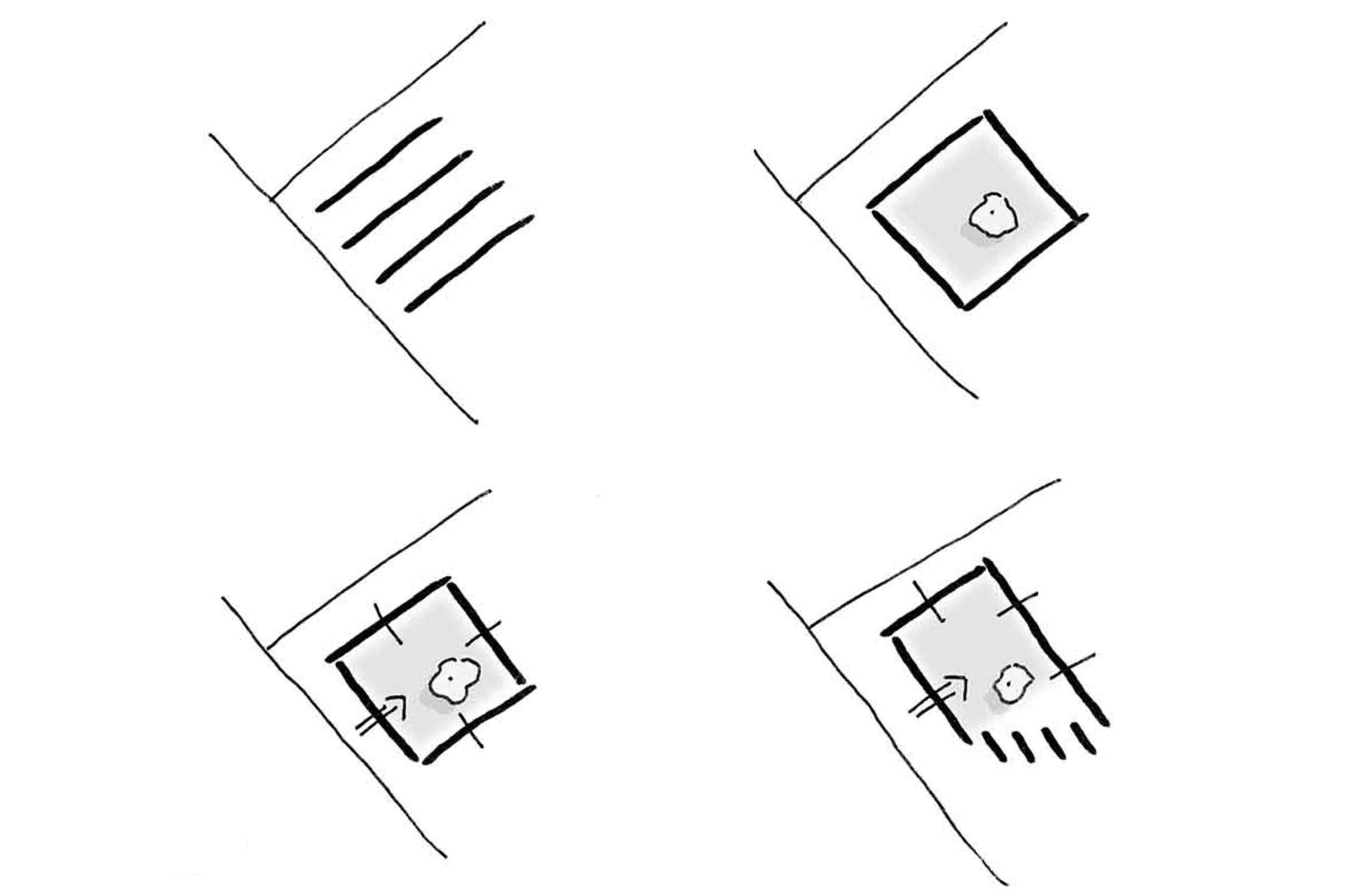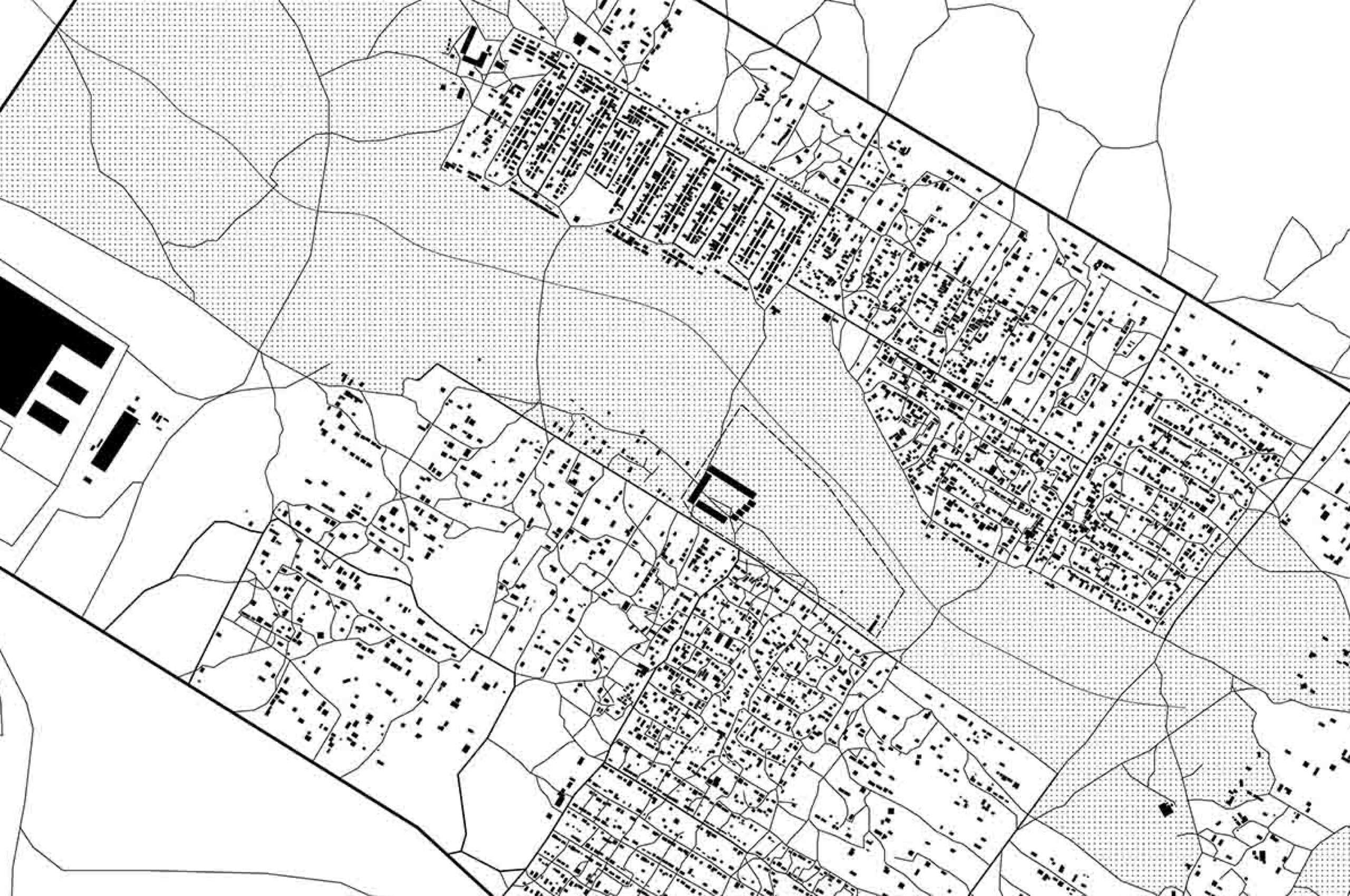Diploma thesis at the University of Stuttgart with Prof. Arno Lederer (Institute for Public Buildings and Design) and Dr. Nina Gribat (Town Planning Institute, International Urbanism).
A clean-up operation in 2005 has systematically destroyed many plots of land in Zimbabwe‘s capital, Harare. Around 25000 of them have been relocated to Hopley, an informal settlement with no infrastructure on the southern outskirts of Harare. In addition there are no public facilities. The only institution at the beginning is a makeshift school, the Rising Star School, which consists of mudbrick shelters and simple constructions. These are covered with insufficiently fixed sheets and can not withstand wind and weather, especially during the rainy season. In addition, the room sizes are too small and have no furniture.
The new school is expected to accommodate up to 800 students, about 15 teachers and the school administration. Since there are no public facilities in Hopley so far, the new school should not only be accessible to the children during the day, but also serve as a meeting place for the residents after school. In addition to adult education, the school can establish itself as a facility for parties and events. As a result, it forms the center of a new district center.
Special about the design is the handling of the materials. Burnt mudbricks form, aligned as round arches, the main structure. Thus, can be dispensed with large amounts of wooden structures, which are very expensive. The brickwork makes the school an identifying building, which adapts to the environment by the choice of materials, but by the way construction shows new opportunities in construction, including for the residents and their homes.
